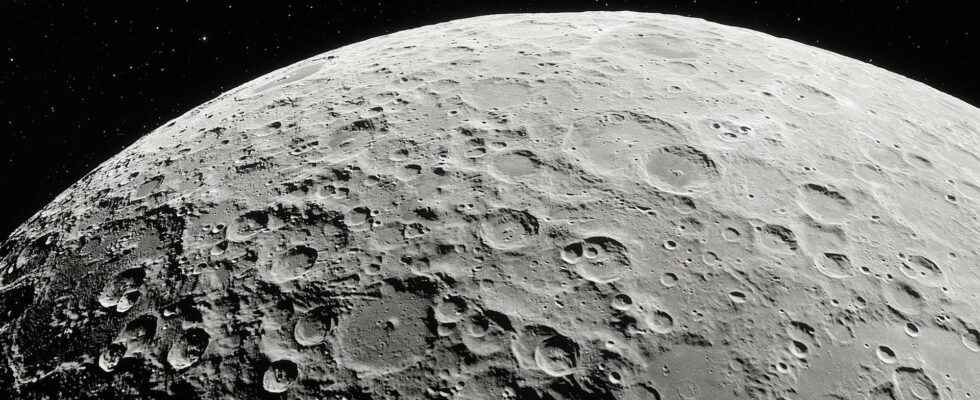You will also be interested
[EN VIDÉO] MMS mission: 4 satellites to study the Earth’s magnetosphere The launch of the four satellites of the MMS mission is near. The objective: to study in detail the magnetosphere of our Planet. This video traces the deployment of the orbiters.
With the appearance of various new lunar projects (including the project Artemis of the Nasaaiming to send humans to the Moon within a decade), the search for water on the surface and under the surface of the Moon is gradually becoming a crucial issue, both for the evolution of knowledge and for possible projects of use for future missions. inhabited, or even the installation of a moon base.
A terrestrial origin of lunar water?
Most of the water on the Moon is commonly attributed to comets or asteroids which would have deposited water during their impact with the Moon during the period of the Great Late Bombardment — about 4 billion years ago, in the youth of the Solar system, it is generally accepted that the planets of the inner Solar System, as well as the Moon, suffered significant asteroid impacts. Some scientists are also beginning to see the solar wind as a potential source of water on the Moon: according to them, it could contain ions hydrogen andoxygen which could recombine into molecules of water on the Moon.
If none of these hypotheses has been denied, a team of scientists proposes in a new study a third hypothesis: what if the lunar water came directly from the Earth?
In their model, it would be more precisely theatmosphere upper part of our Planet which could be a source of water for the Moon. In a natural and continuous way, the planetary atmospheres undergo losses of gas atmospheres to outer space: this is called theatmospheric exhaust. This escape – which can have multiple causes – has, among other things, helped the appearance of life on Earth thanks to the escape of hydrogen, or has also led to the disappearance of most of the Martian atmosphere. Thus, the Earth’s atmosphere expels hydrogen and oxygen ions which, according to scientists, could recombine into water molecules on the Moon.
The magnetic field as a motor
But, according to the study, this flow of hydrogen and oxygen ions from the Earth’s atmosphere to the lunar surface is only possible thanks to the effects of the earth’s magnetic field : the latter generates the magnetosphere, thereby shielding the Earth from a large portion of charged solar particles. Scientists actually suggest that these ions are transported to the Moon as it passes through the tail of the magnetosphere — which is also the main source of northern Lights –, and this for five days during the period of lunar revolution.
But the process seems somewhat complex: during its passage through the tail of the magnetosphere, the Moon causes disturbances there, some of which push the ions escaped from the Earth’s atmosphere to fall back there; the Moon thus present in the flux, and devoid of a protective magnetosphere, accumulates ions which would combine once on the Moon to form the permafrost lunar at the poles.
The presence of ions capable of forming water molecules has been confirmed during the lunar transit in this region of the magnetosphere
Scientists have more than one argument in support: thanks to recent measurements carried out by various space agencies around the world, the presence of ions capable of forming water molecules has been confirmed during the lunar transit in this region of the magnetosphere.
In parallel, the team of scientists analyzed gravimetric data collected by the probe Lunar Reconnaissance Orbiter at the lunar poles, to confirm the presence ofanomalies indicating in certain places the presence of water (in the state solid Where liquid) contained in certain porous rocks of the lunar polar regions: the latest estimates would indicate the presence of more than 3,500 km3 of water in the lunar polar regions with the sole origin of terrestrial atmospheric escape!
Support an editorial team committed to popularizing science on Patreon!
Our mission ? Return the knowledge accessible to everyone.
We produce our own articles, investigations and reports every day, all on a human scale. Support us in this approach and this ambition.
Subscribe to Futura on Patreon!
Two subscription plans are offered to you with the following advantages:
- ” Futura ad-free »: get guaranteed ad-free access to the entire site for €3.29/month (+VAT).
- ” I participate in the life of Futura »: in addition to access without advertising, take part in the life of our independent media (votes, new content, surveys, etc.) for €6.29/month (+VAT).
Interested in what you just read?
